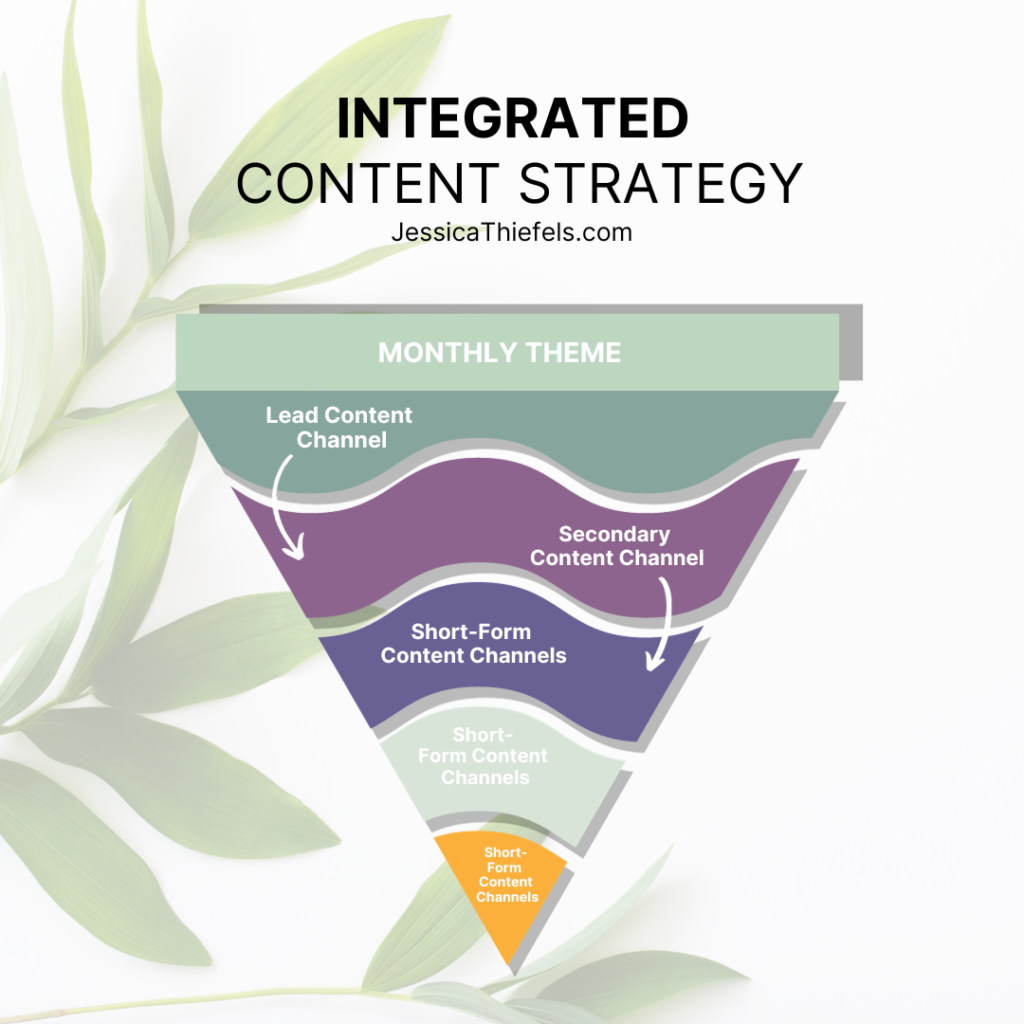As you plan your strategy for 2024, I want you to consider these organic content marketing goals as a key part of that strategy. It’s no longer enough to check the box—post to social, throw up a blog post, and shoot out an email or two. Your consumers are craving more from you. They want relevant data on mental health, new tools and resources, and fresh content.
You have to evolve, play alongside your competitors, and do it with intention. That means focusing on important shifts around diversity and content format, while also going back to the basics like documenting your strategy.
Use these organic content marketing goals to turn your platforms and channels into the powerful growth tools they can be.
Don’t ignore organic search. Let’s amplify the impact of your mental wellness brand.
1. Documented Your Organic Marketing Strategy
I know this sounds basic, but according to CMI’s 2023 B2C report, not everyone is doing it. In fact, 36 percent of B2C marketers report having a documented strategy and another 21 percent don’t have a strategy at all.
When you’re managing a team and moving at a fast pace, it’s easy to forget about the basic stuff. That’s also why having your strategy written down can actually be helpful. As you change course or try new content formats, you can continually come back and ask yourself: is this getting us closer to what we set out to achieve this year/quarter? It can serve as a north star as you evolve throughout the year.
To create a strategy, all you need is a Google Doc or Google Sheet. Break it up by stages of the funnel (top, middle, bottom), and under each stage, specify:
- Platforms used
- Specific goals for each platform
- Types of content (video, blog posts, etc.)
- Owner/lead of each channel or funnel stage
- Distribution plans, if needed
You can also do this with a tool like Trello (they have many marketing templates) or Monday (check out their marketing templates too).
2. Prioritize Diversity (But Really)
It seems like we’ve been talking about diversity and inclusion in content marketing for a few years now (as we should!), but it’s time to take it seriously if you haven’t yet. The good news is that it doesn’t have to be complicated to create content that appeals to your entire audience. You just have to start at the foundation with who’s writing or contributing to the content.
Infusing this diversity into your content is about details like how something is said, the voice that’s used, or even references made. Bringing that into your strategy can look a few different ways depending on your setup. Here are some ideas:
- Diversify your in-house writers, freelancers, and content creators.
- Get insights from a wide range of team members or experts and have your content creators build the content around that.
- Byline articles by various team members and bring their unique and diverse insights to the content by having them send a voice memo or bulleted list of ideas on the topic for the writer to weave into the content.
When writing content, I often use the third option, which allows us to create bylined articles by many people within the organization—but my team and I still do all the heavy lifting of writing, editing, and publishing.
3. Invest in Unique Long-Form, SEO-Optimized Content
Searches for mental illness and mental health symptoms are growing. The best way to get in front of these people who need your products and services is to create long-form content that ranks in search. However, more and more companies are creating long-form content.
According to the same CMI report, 86 percent of B2C brands are writing 1,500-word (or fewer) articles. It’s no longer enough to create this content, but to do it uniquely—and to optimize it for SEO.
This means you have to go beyond AI and beyond low-cost freelancers. You need to be intentional from the start with how you choose topics (based on keywords), how well the content is written, how thorough it is, and how much your voice guides the article.
At the end of every article, you want to be able to answer the question: how do we know this is from us and not someone else?
We earned 2K new non-branded keywords for our client in 5 months. We can help you too.
4. Align and Streamline Your Strategy
You’re creating so much content as a marketing team right now, but is everything you’re doing aligned and streamlined, or is it siloed between platforms and channels? The “omnichannel” strategy has been discussed for years, and most companies have mastered it, but now is the time to streamline and align each aspect of that strategy
I teach all my clients to do this with a simple framework: The Integrated Content Strategy, which you can see illustrated below:

The idea is simple: we pull everything from your most robust content, which is often blog content. From that we can get email topics, social media posts, and podcast episodes—no matter where you’re present, we can use this framework to make sure that you’re being both efficient and resourceful with content creation across the board. In other words, you’re spending less time and money to do the same amount of stuff.
5. Add Video Into the Mix
If you haven’t played with video yet, now is the time to do it. In fact, you’re late to the game if you haven’t: 91 percent of businesses using video as a marketing tool in 2022 and 96 percent say it’s an important part of their strategy according to Wyzowl.
As a mental wellness brand, you also stand to gain significant impact through video. This content format can help you deepen the connection between your audience and your brand or team. It can also allow you to have a greater awareness of mental health issues, especially among young audiences, who are consuming a lot of video content.
The thing is, video is more dynamic than you might assume. We’re not just talking about Instagram Reels or YouTube videos, though those are valuable. Video comes in many forms and can support your business in a variety of ways. Wyzowl shares the most popular video styles marketers are using right now:
- Social media videos
- Explainer videos
- Presentation videos
- Testimonial videos
- Video ads
- Teaser videos
- Sales videos
- Product videos
As you set organic content marketing goals, determine which types of video you want to test or which you think will be most supportive for the business. From there, you can figure out what you need for resources, budget, and support to make it happen.
Remember: you don’t need to overthink this. Video can be created right from your phone or within Canva. The focus should be on playing and testing rather than getting it perfect right away.
Content Marketing Goals for 2024
Now is the time to take content marketing to the next level—and these goals will help you do that. Find what’s most aligned with your brand and organization, build it into the (documented) strategy, and implement it. Finally, make sure you’re tracking monthly metrics so you know what’s working and what’s not.



